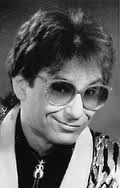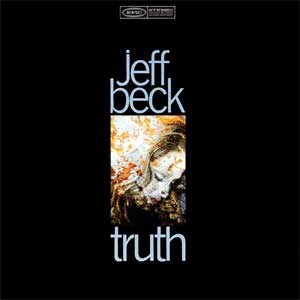Archive for the ‘History’ Category
The Jurassic era….
Posted: December 6, 2007 in History, MusicTags: guitar, guitarist, Prinsthal, Rick
The Innocence of Youth
Posted: October 10, 2007 in History, MusicTags: Crossley, Paperboys, Prinsthal, Rick
Rick mentions Cub Koda on his Facebook page. In my life, the guys I have most aspired to be like are guys like Cub, and Lenny Kaye, and the Alvin brothers, who are scholars, historians and musicians. Guys who you could sit down and discuss whether Wynonie Harris or Stick McGee had a bigger impact on rock’n’roll. Guys who see their role as carrying on what is basically an oral tradition, continuing to present music that matters to them to an audience that is prepared to appreciate it. When I say “guys”, rest assured that I’m not being gender-specific, there are a lot of women who fall into this category, as well.
Most Influential Album II
Posted: July 5, 2007 in History, MusicTags: blues, Faces, Jeff Beck, Rod Stewart, Ronnie Wood
Alright, I’ve confessed that the 13-year-old D.J. Crossley was deeply impressed by the Stones’ finest live effort the last time out. Now we move on to the 15-year-old.
Most importantly for me, by the time the band fell apart (around 1970), Stewart and Wood had become fast friends. When Woody was invited to put a new project together with the suddenly Steve Marriott-less Small Faces, he dragged his drinking buddy along to the rehearsals. Finally, after a couple of days of sitting and watching, drummer Kenny Jones suggested that Stewart have a go at singing with them. The die was cast, and the best-rocking, hardest-partying band of the 70’s was born – Faces.
Most Influential Album
Posted: June 20, 2007 in History, MusicTags: Chuck Berry, Keith Richards, Mick Jagger, rock'n'roll, Rolling Stones
It led me to a little self-examination, to see if I had somehow had a similar watershed moment of my own. And it didn’t take too long to find. The single most influential record I have ever heard in my life is…”Get Yer Ya-Ya’s Out! The Rolling Stones in Concert“.
 Recorded on the 1969 tour of America, yeah, it does contain the definitive versions of “Jumpin’ Jack Flash”, “Midnight Rambler” and “Sympathy for the Devil” (and a darned good “Honky Tonk Women”, although probably not the definitive version), but that’s not what really affected me. The three songs that are contained on that album that literally changed my life are “Carol”, “Love in Vain” and “Little Queenie”.
Recorded on the 1969 tour of America, yeah, it does contain the definitive versions of “Jumpin’ Jack Flash”, “Midnight Rambler” and “Sympathy for the Devil” (and a darned good “Honky Tonk Women”, although probably not the definitive version), but that’s not what really affected me. The three songs that are contained on that album that literally changed my life are “Carol”, “Love in Vain” and “Little Queenie”.Hearing Keith Richards play Chuck Berry was an epiphany to me. It is some indication of how they felt about Chuck that they included TWO of his songs on an eight-song live album.
Some time later, I bought the first couple of Stones albums, and there, you’d listen them studiously wrestle with a Jimmy Reed or Howlin’ Wolf song, but when they got to that obligatory Chuck Berry number (there was at least one on each of the first three records), it was like recess, man!
Deacons Timeline IV – “The Deacons Decade”
Posted: January 17, 2007 in History, MusicTags: Brawn, Crossley, Deacons, Hoffman, Prinsthal, Rick, Thorpe
1990
“Once that train was back on the rails, the first place Rick and I went was to the pawn shop to get his big, red Gretsch out of hock. From that moment on, it was inevitable that we put the band back together”, says Dave.
The Screamin’ Deacons lineup was together again for most of 1990, even managing to record three new tracks – the Prinsthal original “Hurting You, Hurting Me“, the Paul Revere and the Raiders classic “Kicks“, and Dave’s tribute to Rick’s newfound sobriety, “The Party’s Over“.
1991
Most importantly, Dave’s daughter was born in January, becoming the first child of a Deacon. However, it became increasingly apparent that other demands on the members’ time were cutting into their availabilty for the Deacons. Kenny was already in two other bands when the call came, and Dan had made a success of the recording business, most notably producing two cd’s for Hamilton folk duo Open Mind.
1992
Dave: “Rick and I just looked at him and went ‘Oh, yeah?’ And that’s how Cam got his gig back as the Deacons’ drummer. For the next four years, we were a trio.”
1993
1994-1995
1996
1997-1999
It was becoming increasingly apparent that Cam was bored with just being the Deacons’ drummer. “The guy has a ton of talent, plays about a dozen different instruments, and could get a gig on three or four of them.”, says D.J.”He was also fascinated by the recording process, just as I was ten years earlier, but it had moved into a totally new arena. Now, it was all digital. He wanted all of that.” As Cam embarked on his new journey, the remaining two Deacons arrived at the same conclusion at the same time. “Rick phoned me, and we both almost said at once, ‘We’re gonna have to phone Kenny and Dan’. So, the Screamin’ Deacons lineup was back together again, and so it would remain for the next two years.
“I guess you can blame me for breaking up the band”, says D.J. “We were coming off this huge, and I mean huge, street party gig in Oakville. Literally thousands of people. They closed off Lakeshore Road from one end to the other, and because Kenny was tight with the woman who was promoting the show, we were featured on the #1 stage. I was 40 years old, it’d been a long time since we’d played a show of that significance (remember, we were mostly playing pubs for a couple of hundred dollars a night at the time – we used to snidely refer to it ‘indoor busking’), and I thought to myself, ‘Crossley, old man, there’s a very real possibility it won’t get any better than this’ and decided to pack it in. Regrets? Yeah, well, I love to play, but there’s a lot about it I don’t miss. I think the time away has made me realize how much fun it really was.”
Deacons Timeline III – Early Deacons
Posted: January 11, 2007 in History, MusicTags: Brawn, Crossley, Deacons, Hoffman, Prinsthal, Rick, rock'n'roll, Thorpe
Summer 1986
October 1986
February 1987
March 1987
May 1987
May / June 1987
Fall 1987
1988
1989
Deacons Timeline II – pre-Deacons
Posted: January 5, 2007 in History, MusicTags: Crossley, Deacons, Hoffman, Prinsthal, Rick, rock'n'roll, Thorpe
1983
Rick casts about for a new gig. He eventually sets his sights on Hamilton, and there moves in with an old high school friend, Cameron Hoffman. They pack up their acoustic guitars and head downtown to busk on the street corner.
1984
Rick & Cam start appearing at Folk Nights at the Gown & Gavel pub in Hess Village, playing Everly Brothers, Gene Vincent et al. Soon after, they meet drummer/rockabilly fanatic Jimmy Faulkner. They form rockabilly trio “The Kingfishers”, and start to gig.
1985
Cam leaves to fullfill his military service. Meanwhile, Dan Thorpe has moved to Hamilton. Rick invites him to join the band, but he just can’t envision a band with no bassplayer. He borrows Dave’s bass rig and they rename the band “The Rumbletones”.
1986
After almost a year of solid gigging, the Rumbletones implode over personal differences between the members. First Dan leaves (replaced by Craig Nicoloff), then Rick walks away.

